| C-628 | C-630 |
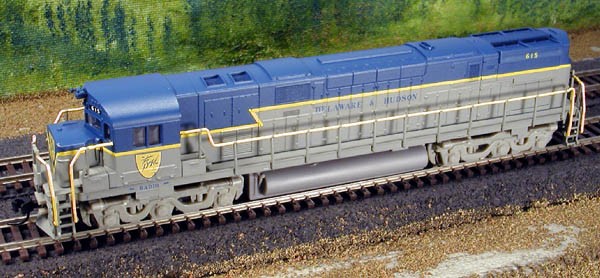 | 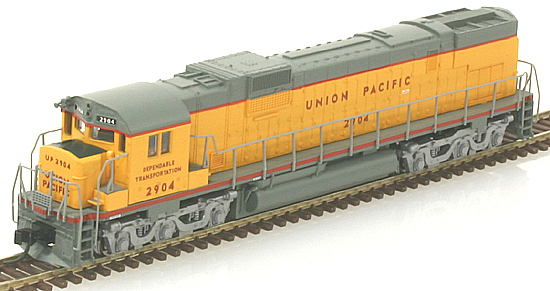 |
| C-628 | C-630 |
 |  |
Introduced: 2004 (initial release) and 2018 (DCC-Sound version)
These models share the exact same chassis / mechanism. The shells are quite similar as well, with only minor differences in detailing (vis'a'vis the different prototypes). Optional Body/Cab details include -
- Low nose headlight (where appropriate by road name)
- Horizontal or Vertical-mounted cab headlights (used where appropriate)
- Pilot with or without footboards (used where appropriate)

The original mechanism sports all the features one normally associates with "modern" Atlas diesels - IE, split-frame / all-metal chassis, 5-pole / skew-wound "scale speed" motor, dual flywheels, low-friction drive, bi-directional "white" LED lighting, all-wheel drive and pickup (no traction tires), blackened / low-profile wheels, shell-mounted Accumate couplers, all-plastic gearing, etc. The chassis is fully DCC-Ready (and, in fact, available with factory-installed decoder).
Performance on these older models is perfect in every way - smooth, quiet, flawless pickup and throttle response, exceptional pulling power, etc. My one minor gripe is the fact that the front and rear handrails do not come preinstalled. And getting said handrails installed is quite a bit more challenging than I think it should be. The things are skinny, bendy, and mighty hard to wrangle. And once installed, they don't seem particularly interested in staying installed...
A reported issue with at least one production run of these models relates to the tiny "press-fit" plastic U-joints (540104 and 490003) that make up part of the mechanism's drivetrain. The problem is that said plastic parts have a tendancy to degrade/crack over time. If the Male Universal fails, it will no longer be fixed firmly inside the flywheel (and thus not spin when the flywheel spins). If the Universal Ball Joint fails, it will no longer be fixed fixed firmly to the end of the wormshaft (and thus not spin the worm). One solution is to order replacement parts from Atlas (if they have them). Or, failing that, simply use some CA (super glue) to fix them more firmly in place. Another option would be to order replacement parts from Briggs Models (www.briggsmodels.ca), who as of this 2018 writing have come up with their own 3-D printed universal parts for these Atlas Alcos.
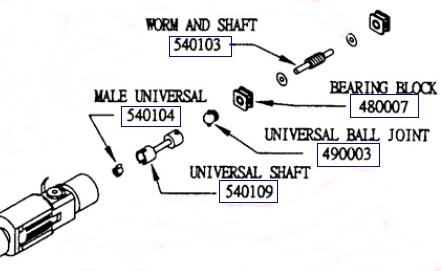
In 2018, the internals were completely redesigned to include support for an ESU LokSound DCC-Sound decoder and accompanying speaker (analog versions and non-sound DCC versions were also part of this release). Instead of using screws and hex nuts to hold the chassis halves together, this new version uses plastic clips on either end of the chassis (the fuel tank and motor saddle also contribute to holding things together) -


Gone are the chassis contact strips that the truck axle-wipers used to rub up against (an Atlas staple since the 1980's). Instead, small wires are soldered to the axle-wipers on the one end and to cylindrical metal plugs (which insert into holes in the chassis) on the other. The plugs on mine are extremely tight fitting and wouldn't budge when faced with a moderate amount of pulling force (I spared the elbow grease because I didn't want to risk damaging them by really forcing the issue). Each plug has an open seam (lengthwise), so I suppose it's possible to resize them should they wind up getting too loose.
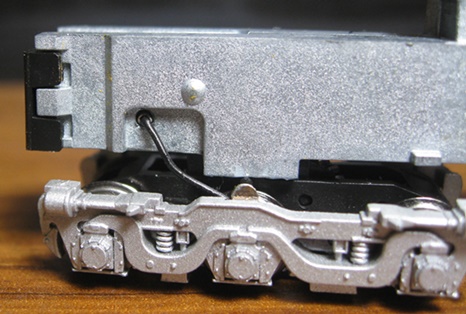
The rest of the internals are more or less the same as before. A five-pole / skew-wound motor spins dual flywheels. In turn, the flywheels spin plastic shafts with notched-cups on the worm side. Said cups spin little ball-and-pin connectors on the wormshafts. Bearing blocks inside of notches in the chassis hold the brass worms in place. A long plastic shield is clipped to the top of the chassis (dunno why - but maybe to prevent short circuits between the PC board and chassis?)
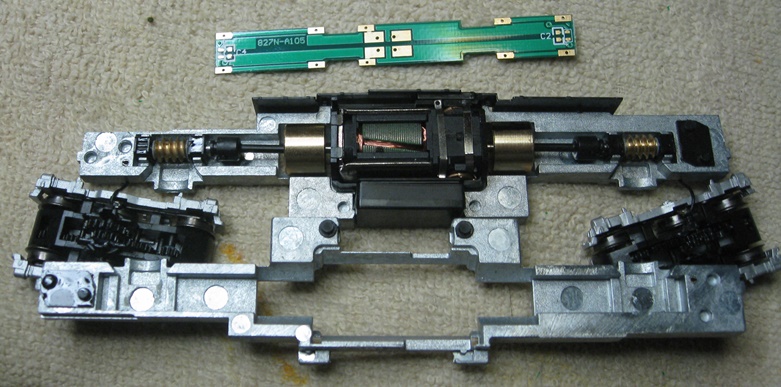
I particularly like the way the circuit boards (and contacts thereto) have been redesigned. Very similar to IMRC's SD40-2 of 2017, metal contacts on the motor saddle transfer current from the main PC board (or decoder) to the motor and to the speaker mounted inside the fuel tank (note that even the non-sound locos come with a speaker). Unlike previous Atlas locos, the main PC board slides in and out of its chassis slots without the need to partially disassemble the chassis first (a nicety that Kato has offered for years). The design and placement of the new PC board contacts is also an improvement over previous Atlas diesels (where getting the motor contacts to line up with the contact pads on the PC board was admittedly a bit "hit and miss").
All twelve wheels provide pickup, all six axles are geared, and all gearing is plastic. The wheels are blackened and low-profile. The trucks and fuel tank appear to be the same as on previous versions (in fact, the fuel tank still bears its "2003" copyright stamp). Note that speaker holes in the fuel tank are not provided (and not really required since the speaker is positioned such that sound projects upward rather than downward).

AFAIK, there were no changes to the shell with this release (so, older shells should presumably work with this newer chassis, and vice versa). The shell is all plastic and includes separate detail parts for the windows, numberboards, handrails, sidesills, and horn. Couplers are shell-mounted Accumates. And hurray, all of the handrails come preinstalled.

Performance on this new version is every bit the equal of its predecessors. Out of the box, I didn't have any problems with the wheel-blackening causing any sort of jitteriness. They run very quietly, throttle response is smooth, pickup is flawless, slow speed creep is "one-time-at-a-time" and the top-end speed is realistic (IE, not too fast). Pulling power is strong, with mine comfortably able to haul twenty-five assorted 50' freight cars through curves on level track (and probably a whole lot more than that). No problems with any of the wheels derailing (even on 9.75" radius curves). Overall, just really superb looking and running models.
The sound on the DCC-Sound versions is well rendered and nicely beefy. And for a change, the default settings for volume are quite reasonable. I didn't notice any difference in performance when operating mine with an analog powerpack (IE, they run equally well using DCC or DC control). As seems to be typical with DCC-Sound models these days, the decoders in these locos are programmed to go through a rather protracted sequence of "start up" shenanigans before they start moving (and with similar behavior when slowing down). To eliminate this nonsense (if you're so inclined), simply set CV124 to 0. Also note that the default behavior is for the sound to be off (IE, put the loco on the rails and it won't make a peep). To turn sound on, hit F8.
Prototype information -
Primarily used for heavy-haul road freight service throughout the US, the C-628 generated a total of 2,750 hp, and was part of the American Locomotive Company's (ALCO) Century Locomotive Line. A total of 185 units were built by ALCO for railroads in the US, Mexico and Australia between 1963 and 1968. During 1965 Alco started producing the 3,000 hp. Century 630 Locomotive. It was produced concurrently with the 2,800 hp. C-628, but it incorporated an advanced GE a.c. traction alternator which provided the extra 200 hp. The most distinctive spotting feature of the C-630 is the large aftercooler radiator housing which extends above the roofline (the aftercooler radiators enhanced the performance of the locomotive while operating under a heavy load). The C-630 also featured a modified cab which offered more interior space for the crew. Through the end of production in the late 1960s, a total of 133 units were produced for railroads in the US and Canada.
Trivia - Briggs Models makes M-630 and M-640 resin shell kits designed to fit this Atlas mechanism -
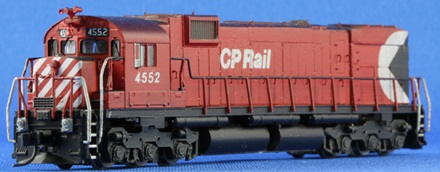
More Trivia - ATSF N Scale Models makes an RSD-7 shell kit (via Shapeways) designed to fit this Atlas mechanism -
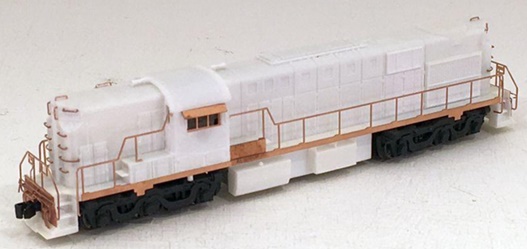
Features (2018 release) -
- Directional lighting
- Walkway safety tread
- Blackened metal wheels
- Scale speed motor
- Factory-equipped with AccuMate knuckle couplers
- Painted handrails
- Golden-white LEDs
- Atlas Master Gold models feature ESU Loksound decoders
DCC Features -
- Supports all DCC-programming modes
- DCC includes RailCom and RailComPlus, with 14, 28 or 128 speed steps and with 2-digit and 4-digit addressing
- Flexible mapping of function keys F0 to F28
- A total of 6 DCC function outputs are available, and all can be function mapped (disable, brightness, light effects) individually
- Follows all NMRA DCC standards and recommended practices
ESU LokSound Features -
- Over 20 sound effects are available, including engine start-up and shutdown, prime mover sounds through all eight notches, bell, air horn, air compressor,
dynamic brakes and more
- There are up to 16 user-selectable horns, 2 user-selectable bells, and 2 user-selectable synchronized brake squeals
- Manual and Automatic Notching modes with the ability to change modes "on the fly" are provided for true realism
Shell removal is very simple - just take hold of the shell with one hand and the fuel tank with the other. Then just wiggle the shell up and off.
Grade: A (for all of 'em)
C-628 reviewed: 08/04 Model Railroader ("An Alco Century 628 has been added to the Atlas stable of great-looking N scale road diesels. It's a big and powerful C-C locomotive that offers railroad-specific detailing... The Atlas C-628 closely matches prototype drawings... The body parts on our sample are highly detailed styrene, while the mechanical parts, truck sideframes, and railings are flexible acetal plastic. The window glazing and headlight lenses are clear styrene... The C-628 mechanism uses the popular N scale split-chassis design... Our sample started and ran smoothly at 4.6 scale mph on 2 volts, reaching at scale 50 mph at about half throttle... The model's drawbar pull is equivalent to about 24 cars... Body-mounted Accumate couplers are factory-installed at the proper height. All of the wheelsets on our sample matched gauge standards except for the flange depth, which is .005" oversize. The paint was evenly applied with clearly printed lettering... This smooth-running heavy-duty Alco road locomotive is an excellent model. LN, ACL, PRR, SP, DH, LV, Undec. $104.95 ($139.95 with decoder)")